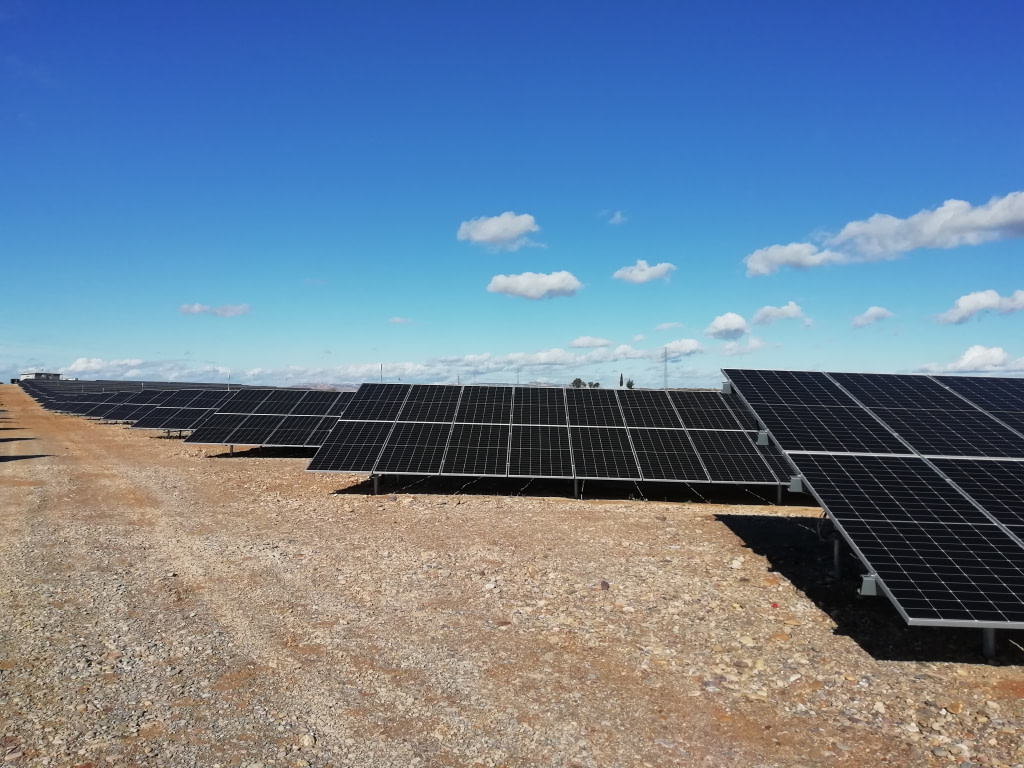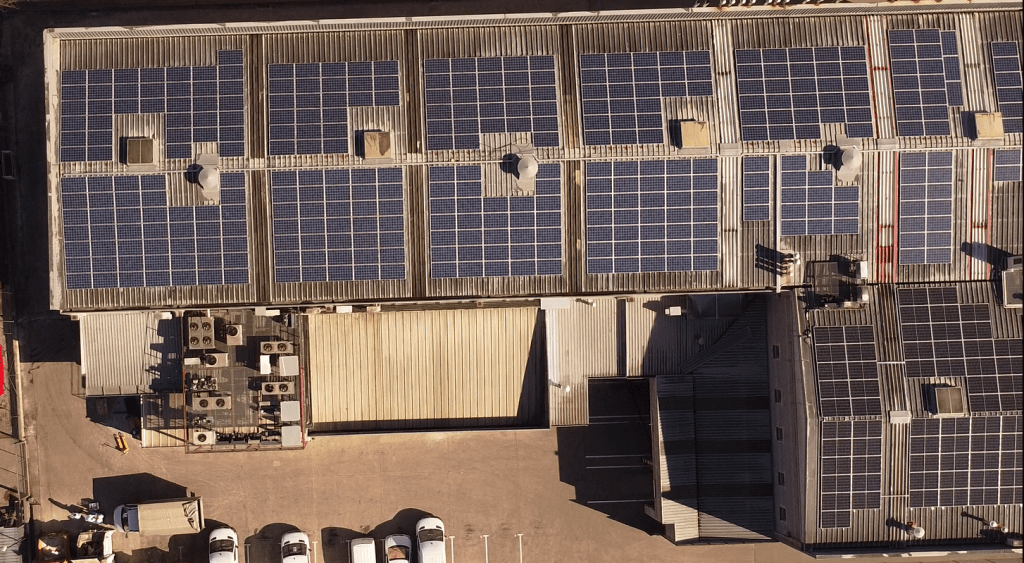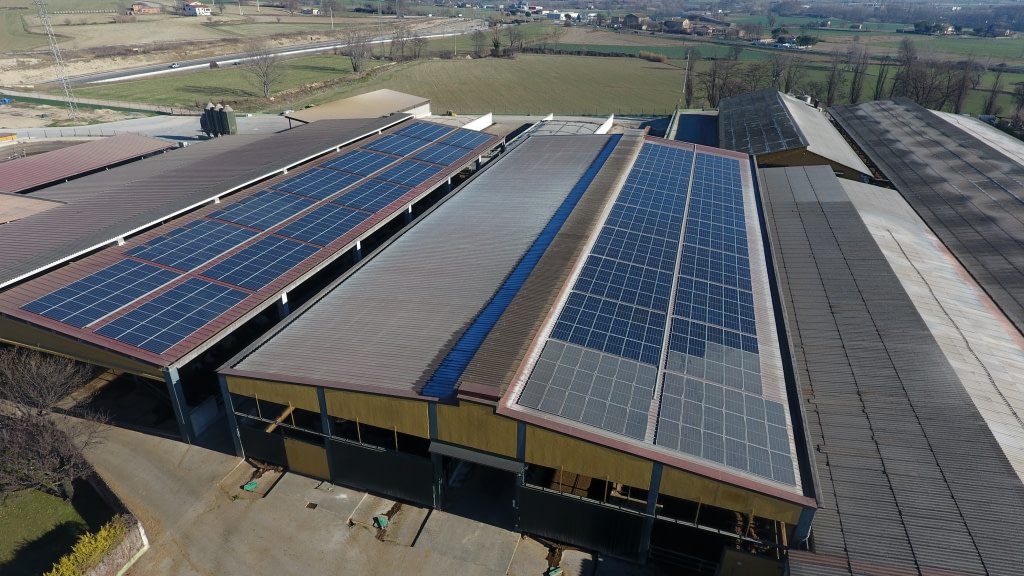FLOATING SOLAR PHOTOVOLTAIC
Let us tell you a little more
The concept of floating photovoltaic solar energy originated in Japan in the 2000s, in response to the growing need to efficiently utilize limited land resources in the country for renewable energy generation. With a lack of available space for installing ground-mounted solar systems, Japanese researchers explored the idea of using existing bodies of water, such as reservoirs and lakes, to host floating solar panels.
Despite the early conceptualization of floating photovoltaics, its practical implementation took nearly three decades to materialize in various pilot projects. During this time, technological advancements in photovoltaic system design and an understanding of the agricultural benefits of the shade generated by solar panels eventually led to successful initiatives worldwide.
The general layout of these installations is similar to ground-mounted photovoltaic systems. Floating solar panels are arranged in arrays on floating structures, which can be either static or mobile, adapting to water conditions and optimizing exposure to solar radiation. Inverters, essential components for converting the direct current generated by the panels into usable alternating current, can be installed either onshore or on floating platforms, depending on the distance of the installation from the shore and specific project conditions. Additionally, underwater cables play a crucial role in transporting the electricity generated by the system from the floating platforms to the onshore substation. These underwater cables are designed to withstand water conditions and ensure the safe and efficient transmission of the generated energy.
Since its inception in Japan, floating photovoltaic solar technology has gained interest and has been the subject of research and development worldwide, with countries such as China, India, and the United States also exploring its potential for clean and sustainable energy generation.
What is the process for building a floating solar park?
Feasibility Study:
The initial phase involves evaluating the site's suitability, including factors such as water quality, depth, and available space. This study assesses the technical and financial viability of the floating solar project.Design and Planning:
Detailed designs are created, including the layout of floating structures, solar panels, and necessary infrastructure. The planning phase also addresses the integration of the system with the existing power grid and environmental considerations.Permitting and Approvals:
Securing the necessary permits and approvals from local and environmental authorities is essential. This step ensures compliance with regulations and addresses any potential environmental impacts.Construction of Floating Platforms:
Floating platforms or structures are constructed and prepared for panel installation. These platforms are designed to be stable and durable, able to withstand water conditions and support the weight of the solar panels.Installation of Solar Panels:
Solar panels are mounted on the floating platforms. The panels are arranged to maximize sunlight exposure and energy generation. This step may include the installation of tracking systems if applicable.Electrical Infrastructure:
Electrical components, including inverters and wiring, are installed. Underwater cables are used to transport electricity from the floating panels to the shore. Inverters are positioned to convert direct current (DC) into alternating current (AC) for use in the power grid.Connection to the Grid:
The system is connected to the local power grid. This involves integrating the generated electricity into the existing infrastructure and ensuring that it meets grid standards.Testing and Commissioning:
Comprehensive testing is conducted to ensure that all components operate correctly and efficiently. The system is calibrated, and any necessary adjustments are made before it becomes fully operational.Ongoing Maintenance:
Regular maintenance is carried out to ensure optimal performance. This includes inspecting and cleaning the panels, checking the floating platforms, and monitoring the overall system for any issues.Monitoring and Optimization:
The performance of the floating solar park is continuously monitored. Data is analyzed to optimize energy production and address any operational challenges..Is your company considering investing in floating photovoltaic energy?
Benefits of creating a floating park:
Utilization of
Water Bodies
It allows the use of underutilized water bodies, such as reservoirs, lakes, and ponds, for renewable energy generation, thus maximizing the use of available space.Optimization of Land Use:
By not occupying additional land, it avoids competition for valuable land use, especially in urban or densely populated areas.Reduction of Water Evaporation:
The presence of floating solar panels reduces water evaporation by up to 80%, which can be beneficial for water conservation in areas with water scarcity.Improvement of Water Quality:
By providing shade over the water, floating solar panels reduce algae growth and the proliferation of unwanted organisms, thus improving water quality and the aquatic ecosystem.Generation of Clean and Renewable Energy:
It generates electricity from a clean and renewable energy source, contributing to the reduction of greenhouse gas emissions and combating climate change.Flexibility and Scalability
It can be adapted to different types of water bodies and installation sizes, making it suitable for a variety of locations and generation capacity needs.Promotion of Sustainable Development:
By combining clean energy generation with water conservation and the enhancement of aquatic ecosystems, it promotes sustainable and environmentally responsible practices.Reduction of Energy Dependence:
Contributes to the diversification of the energy matrix by providing an additional source of renewable energy, thus reducing dependence on fossil fuels and other non-renewable sources.Our clients vouch for us







































Do you need any additional information? We are here to help you.
To maximize the use of surplus energy from your solar photovoltaic installation, you can consider different options:
Compensation: If your installation has a capacity of less than 100 kW, you can opt for surplus compensation. The surplus energy is fed into the grid and your electricity supplier will pay you for it at an agreed price. This amount is deducted from your monthly bill, but cannot exceed your total bill. The compensation price is usually lower than the price you pay for the energy consumed, as it is based on the wholesale market and does not include additional charges such as tolls and electricity taxes.
Direct sale of energy to the grid: For installations with a capacity of more than 100 kW, such as industrial installations, surplus power compensation is not an option. In these cases, surplus energy is sold directly to the grid. This requires a specific contract with the retailer and, in some cases, a special license. The income generated depends on the market price of the energy.
Installation of physical batteries: You can choose to install physical batteries in your system. These batteries store surplus energy so that you can use it when you need it, for example, at night or on cloudy days. This option can offer greater control over your power supply and reduce dependence on the grid.
Virtual battery: If the economic value of your surplus in a month exceeds the economic value of your consumption, according to the self-consumption regulations, it is lost. However, some suppliers offer the option of a virtual battery. In this case, the uncompensated surplus energy is “stored” in a virtual account and can be used in subsequent months when consumption is higher. This option allows better use of the energy generated and is usually subject to a fixed monthly fee.
Waiver of surplus discharge: Another option is to configure your installation not to discharge surplus to the grid. This may be viable in industrial facilities where access to the grid is limited or surpluses are minimal. In this case, the surplus energy is simply not used, which can result in a loss of energy potential.














